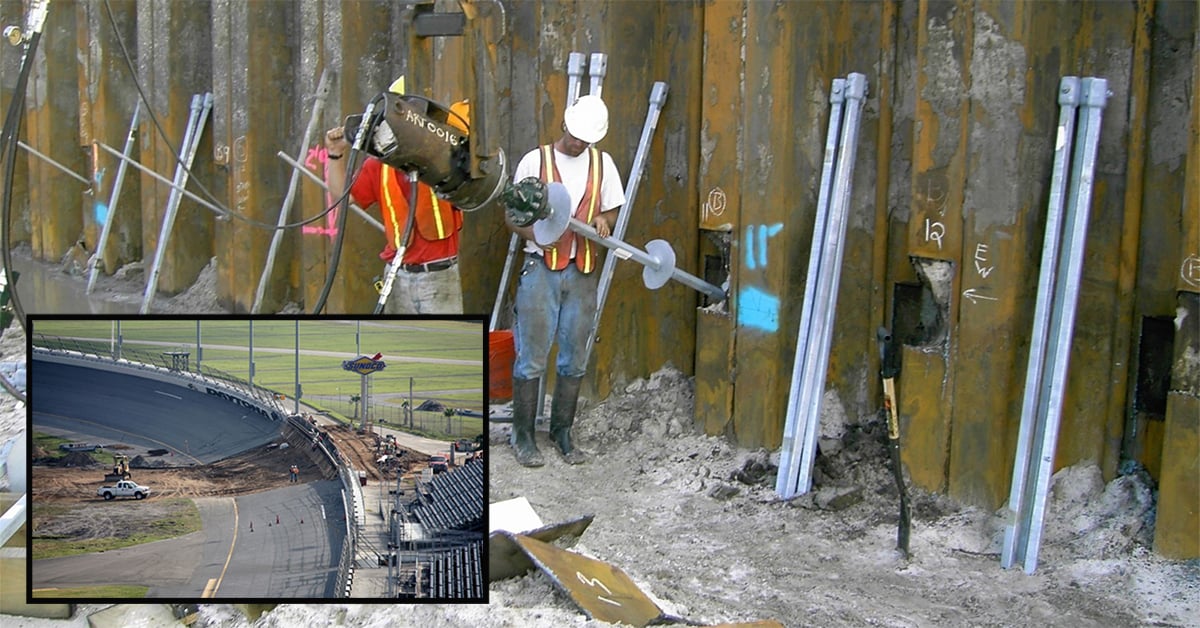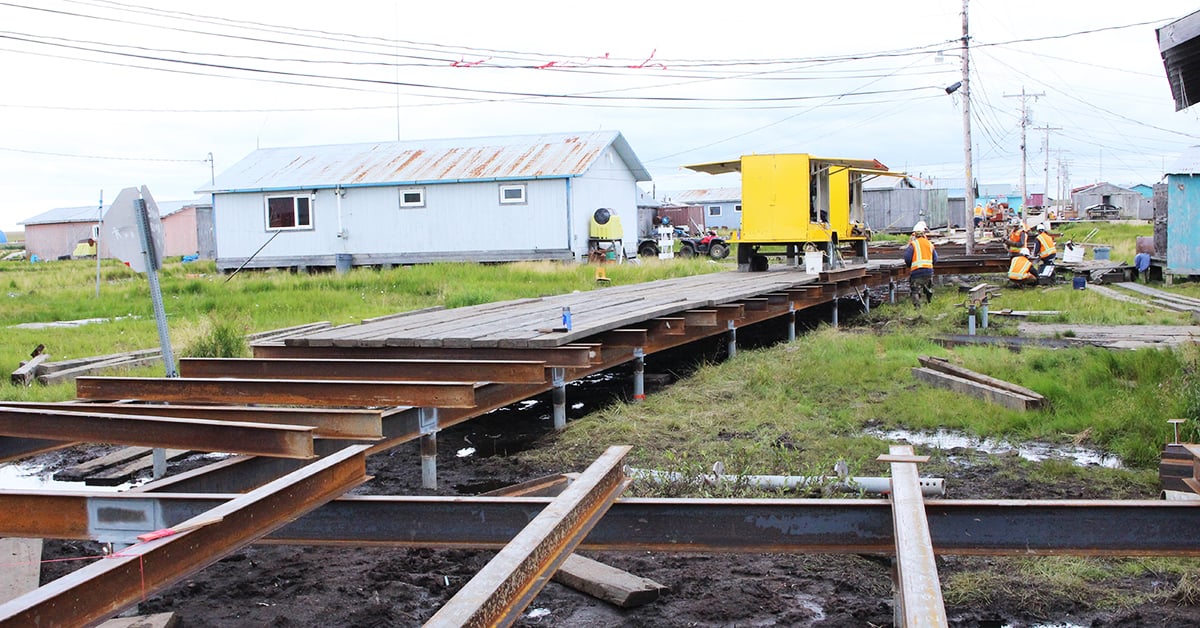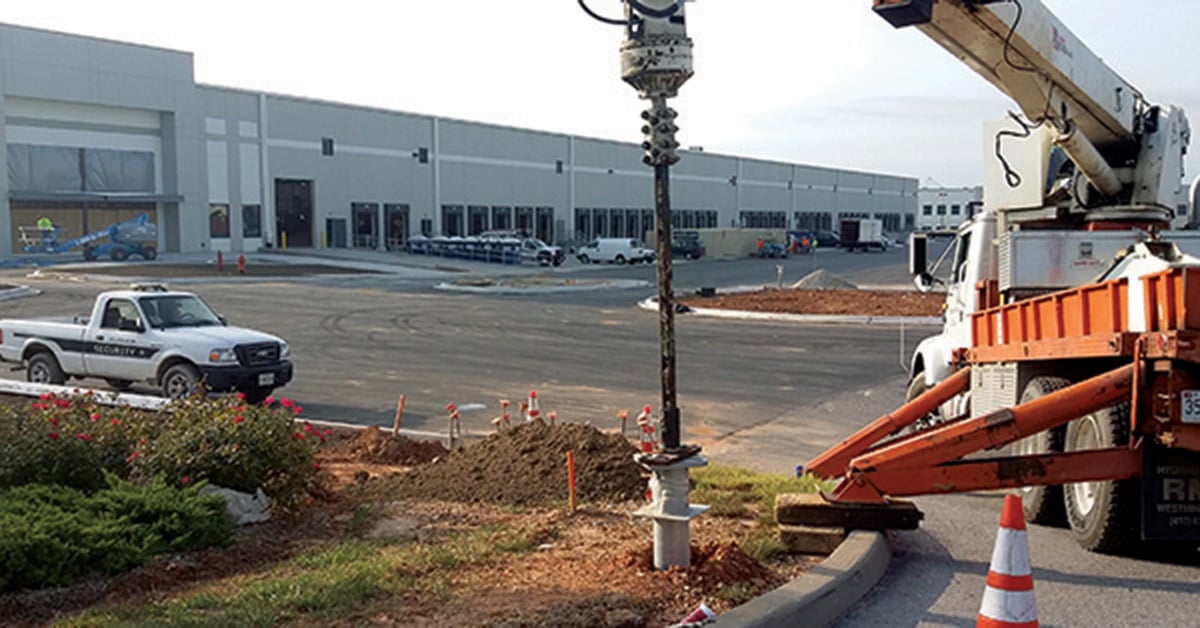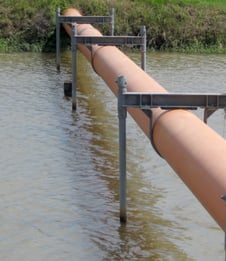It never ceases to amaze me how many of those in the foundation business believe helical piles are a relatively new technology. The fact is the technology preceded many well-known innovations: the first gasoline-powered car (1886), reinforced concrete (1849), and vulcanized rubber (1839). Helical Piles, also known as screw-piles, screw piers, screw anchors, screw foundations, helical piers, and helical anchors, were first used for the Maplin Sands Lighthouse in England in 1838. In fact, helical piles were actively used up until the turn of the 20th century when the manual methods of pile installation were deemed archaic with the introduction of new technology such as the steam engine. Fast forward to 2022. Helical piles are commonly used for everything from zip lines to rail lines and from your house to the White House.
So, what changed?
As the 20th century progressed, the modernization of installation tooling for helical piles replaced the old capstan method, where animals and people were used to manually screw helical piles in the ground. With the advancement of tooling powered by torque motors came more and more applications in which helical piles were the most effective technology vs. other piling types.
Key considerations when choosing your pile type: C.A.N.D.E.R.
Not all pile types are the same. Though some piles can overlap potential applications, the primary considerations are as follows:
-
-
Capacity - loads; including compression, tensile, and lateral. Watch a short video explaining loads.
-
Access - what are the site considerations? Indoors, outdoors, busy city, underwater?
-
Number of piles - depending on the required capacity; cost can vary by pile type
-
Depth - to what depth do the piles need to be installed to reach stable, load-bearing soil?
-
Environment - what are the considerations of the surrounding environment (brackish coastal conditions, sensitive ecosystems, no spoils generated)
-
Regulatory - are there regulatory conditions that must be considered when deciding on pile types. These can include maximum capacity allowed for a pile type, pile types approved for seismic zones, and building code considerations.
Helical Piles - Applications beyond the normal
Sure, there are typical structural and site applications for helical piles; however, there have been both interesting and weird applications too. This author’s research discovered there are close to 100 applications where helicals are or could potentially be used. Here are a few that might spark your interest:
Entertainment and sports venues/events
Tension load is a big factor when putting up a commercial tent. Helical Piles are the perfect solution since they can be installed, backed out, and installed again as venues move or change. In fact, the Capital in Washington DC currently uses helical anchors to tie down canopies for events on its property. Helical anchors were installed for tieback and reinforcement purposes for a new tunnel at Daytona Motor Speedway. The tunnel provides access for drivers and on-site personnel to and from the infield. CHANCE helical piles have been used in multiple well-known sports venues in various applications including Dallas Cowboys’ AT&T Stadium in Arlington Texas, the Detroit Lions’ Ford Field, Philadelphia Phillies’ Citizens Bank Ballpark and Minneapolis Twins’ Target Field. Other prominent venues include the 2002 Winter Olympics in Salt Lake City and even boat moorings for America’s Cup!

Daytona Motor Speedway CHANCE SS175 helical anchors used for sheeting tiebacks and tiedowns areas for buoyance control.
History anyone?
Saint Augustine Florida, established in 1513 by Juan Ponce de Leon, is the oldest city. In addition, it is a top tourist destination for young and old. And yes, part of that history includes helical piles. Helical piles were used in tie back applications to construct seawalls surrounding the city and in construction of the bridge to the famous St. Augustine Cross, primarily because of their low impact to the surrounding environment and ecosystem. About 700 miles north in Charlottesville, VA stands Monticello, the home of Thomas Jefferson. Helical piles were used to remediate the historic home due to settlement.
Boardwalks
Both an ideal and common application for helical piles, a Bobcat or skid steer is typically used for installation. After installing the first few piles and laying the boardwalk, the tractor can drive on the boardwalk and install more helical piles as construction continues, keeping the surrounding ecosystem safe and eliminating the need to construct from a boat (Although that is possible! Learn more). A combination of both pipe and square shaft are common for this application.
Board Roads
Yes, you heard that right. In the Native Village of Kongiganak Alaska, ATVs and snowmobiles are the standard mode of transportation. However, when snow thaws and the tundra is exposed, the ground turns swamp-like. The board roads provide year-around ability to travel the village and beyond. CHANCE RS3500 pipe piles were used for this application.

Helical piles for lighting and other wire-ready foundations
The future is bright! Though a slightly different configuration than traditional helical piles, helical piles for lighting, including street and highway lighting, have been around for over 40 years. These helical piles are designed to accept line and load wiring and mount a light pole within minutes. One of the biggest benefits is reducing roadway/highway lane closure time. This same anchor can be used for smaller lighting applications [bollards], 5G applications, EV charging infrastructure, and has even been used for a flagpole in the stadium in Centralia Missouri.
Get the application guide for pole base foundations.

Fighting Crime
CHANCE makes an anti-theft foundation device for its streetlight anchor foundation that prohibits expensive wiring from being stolen by thieves who cash in at scrap yards. In addition, the technology reduces the need to retrench and rewire the line side electrical feed.

Tie it down
Helical anchors have also been used to anchor the famous Goodyear blimp at its home base in Suffield, Ohio. They are also ideal for underwater mooring for the fishing and boating industries, and as pipeline anchors for oil and gas pipelines.
The list goes on and on and continues to grow. From indoor applications where other pile types and installation machinery cannot go, to dense metro areas where noise, vibration, and spoils must be avoided, helical piles have been proven through the years to be THE best, scalable solution for expansive number of ordinary and extraordinary applications.
Do you have a unique helical pile application you would like to share with us? Email us and tell us about it!
Are you ready to learn more about how helical piles can work for you? Contact your local CHANCE distributor.









